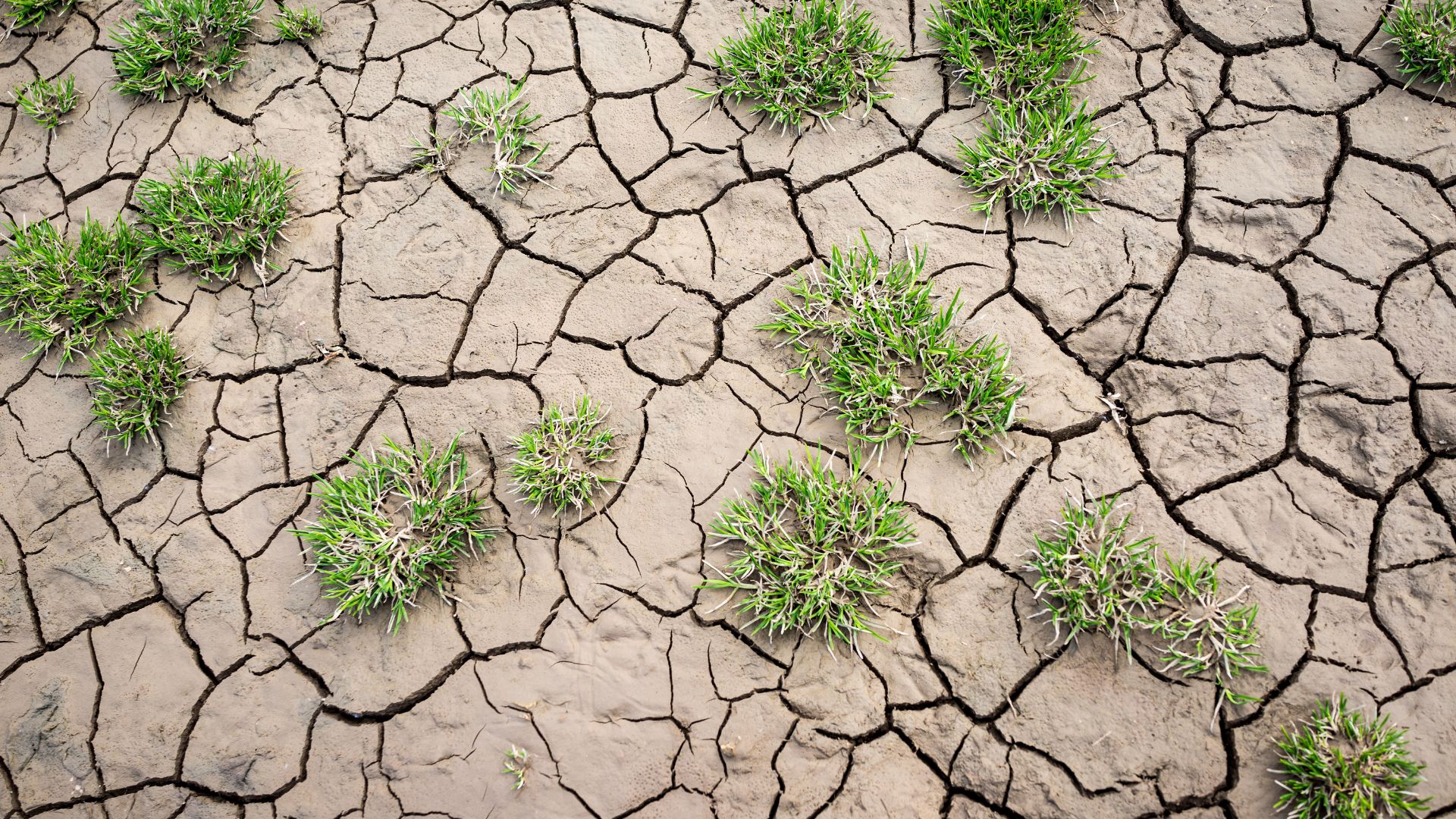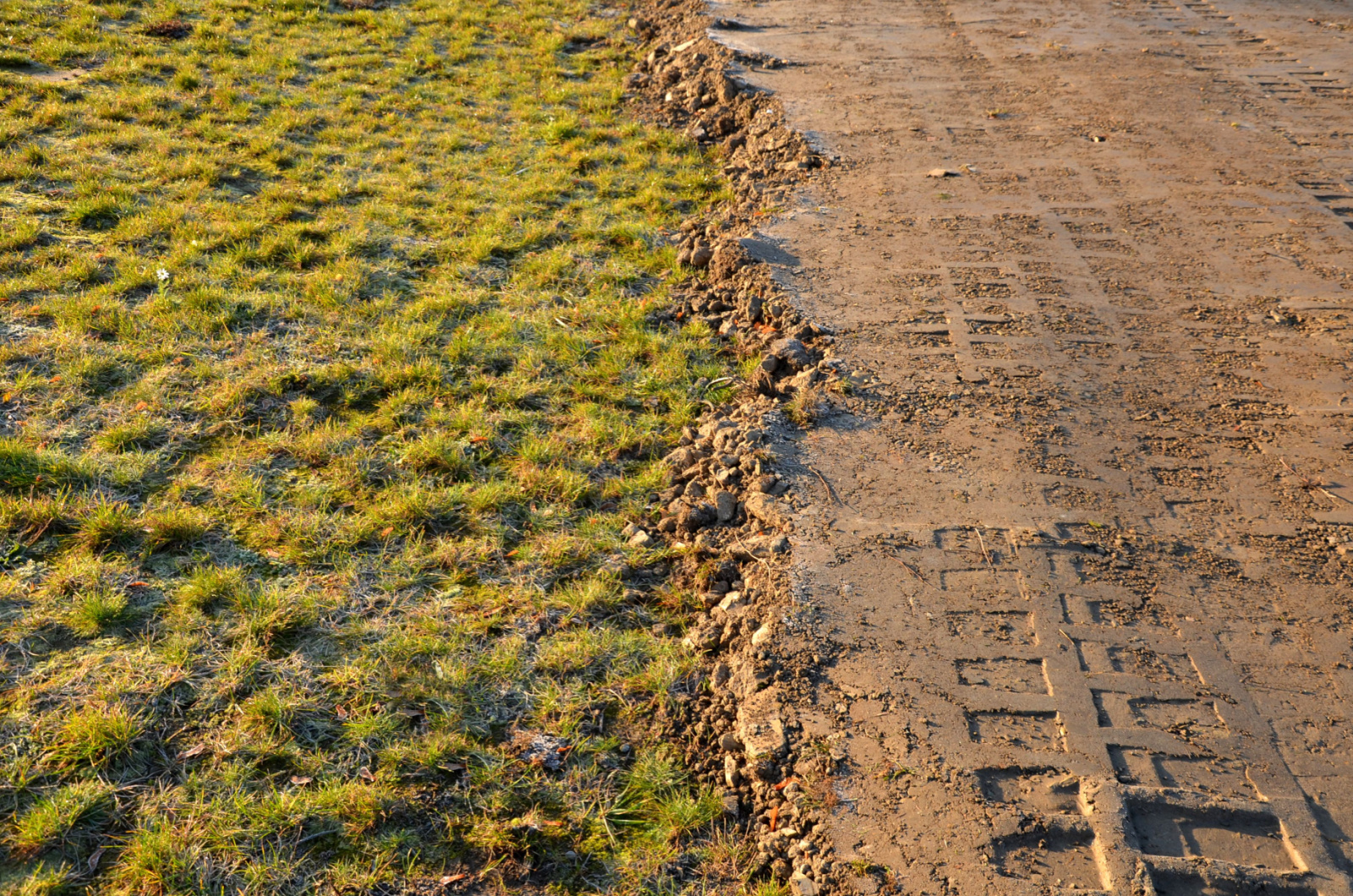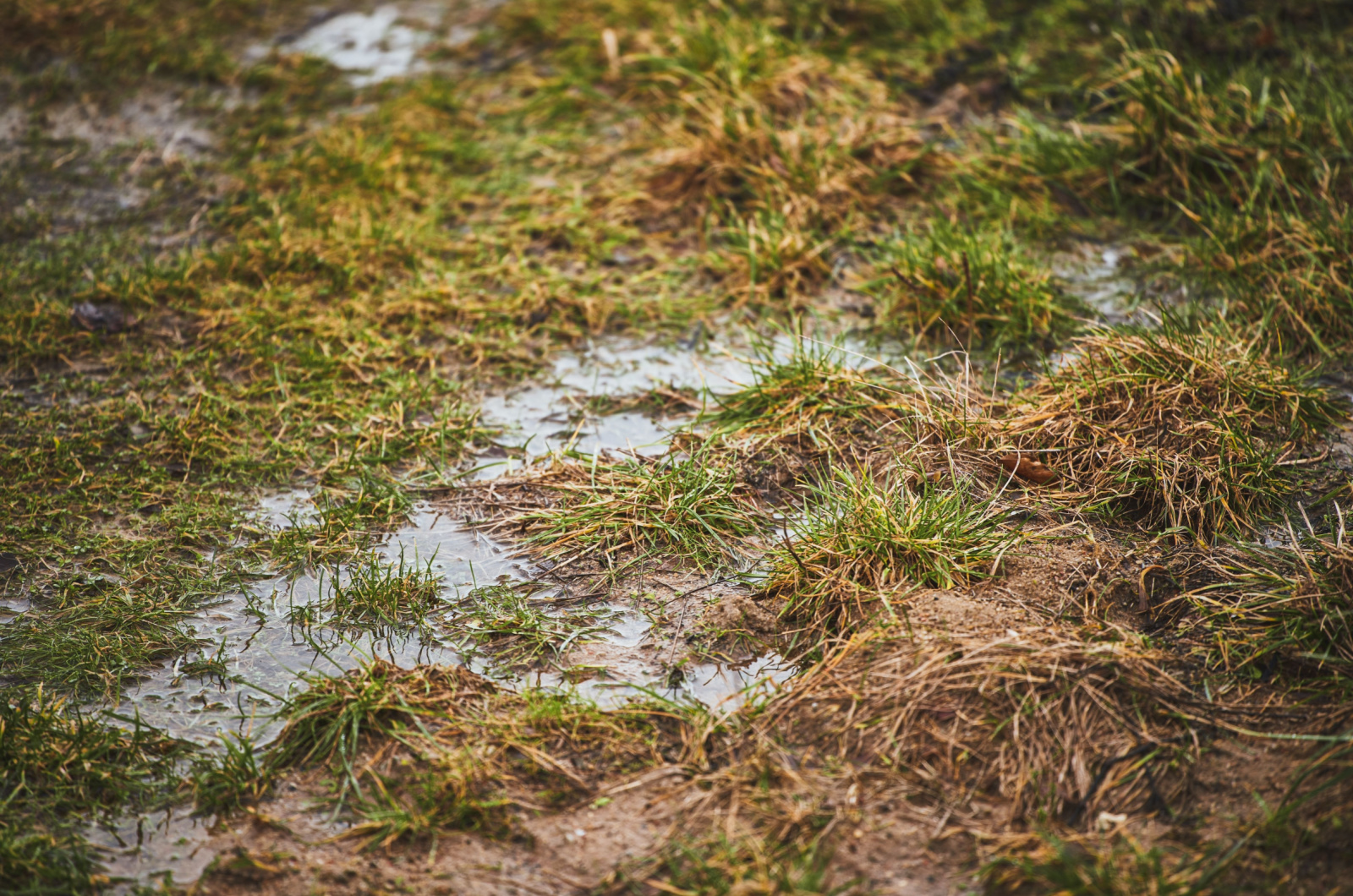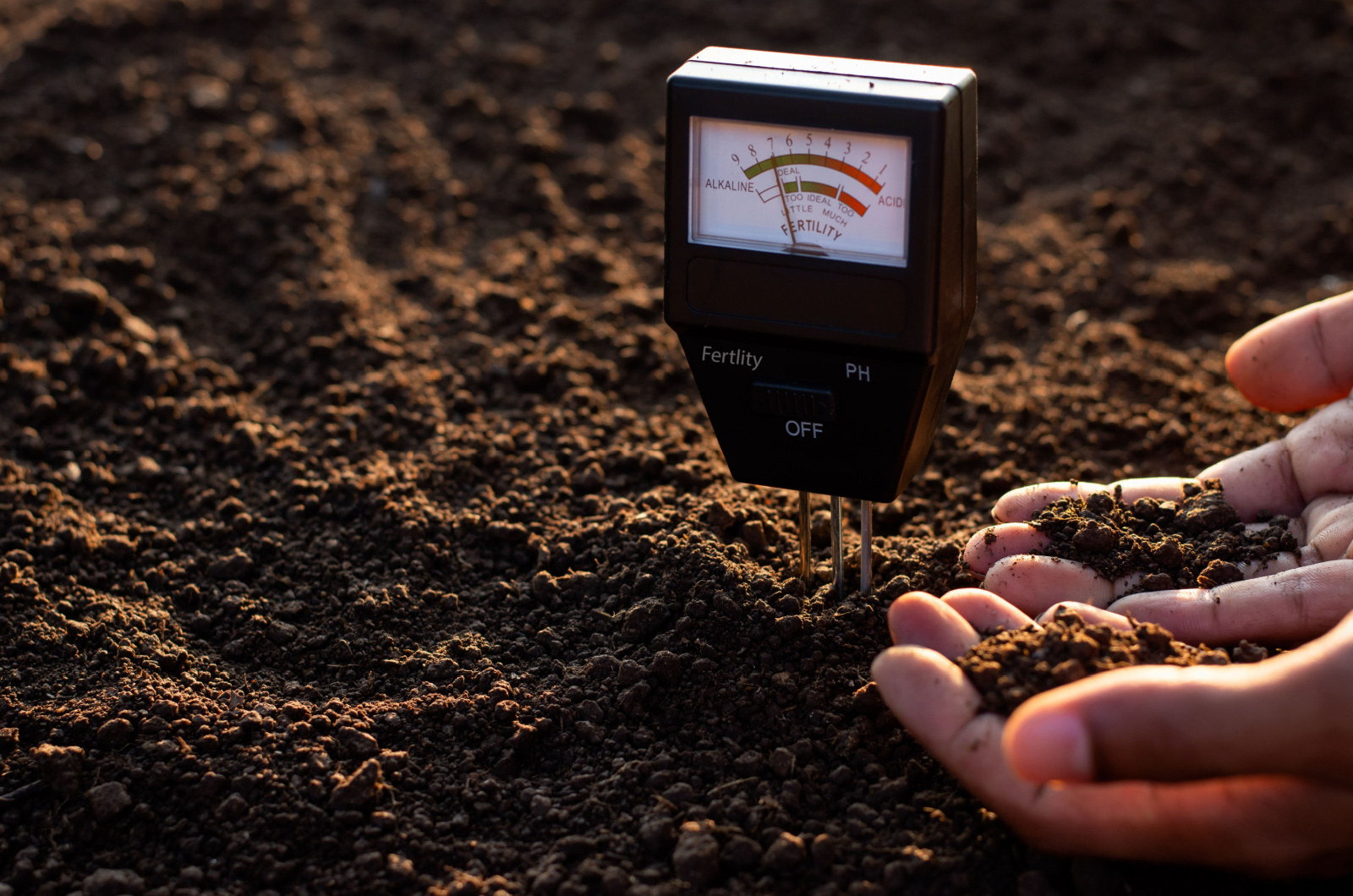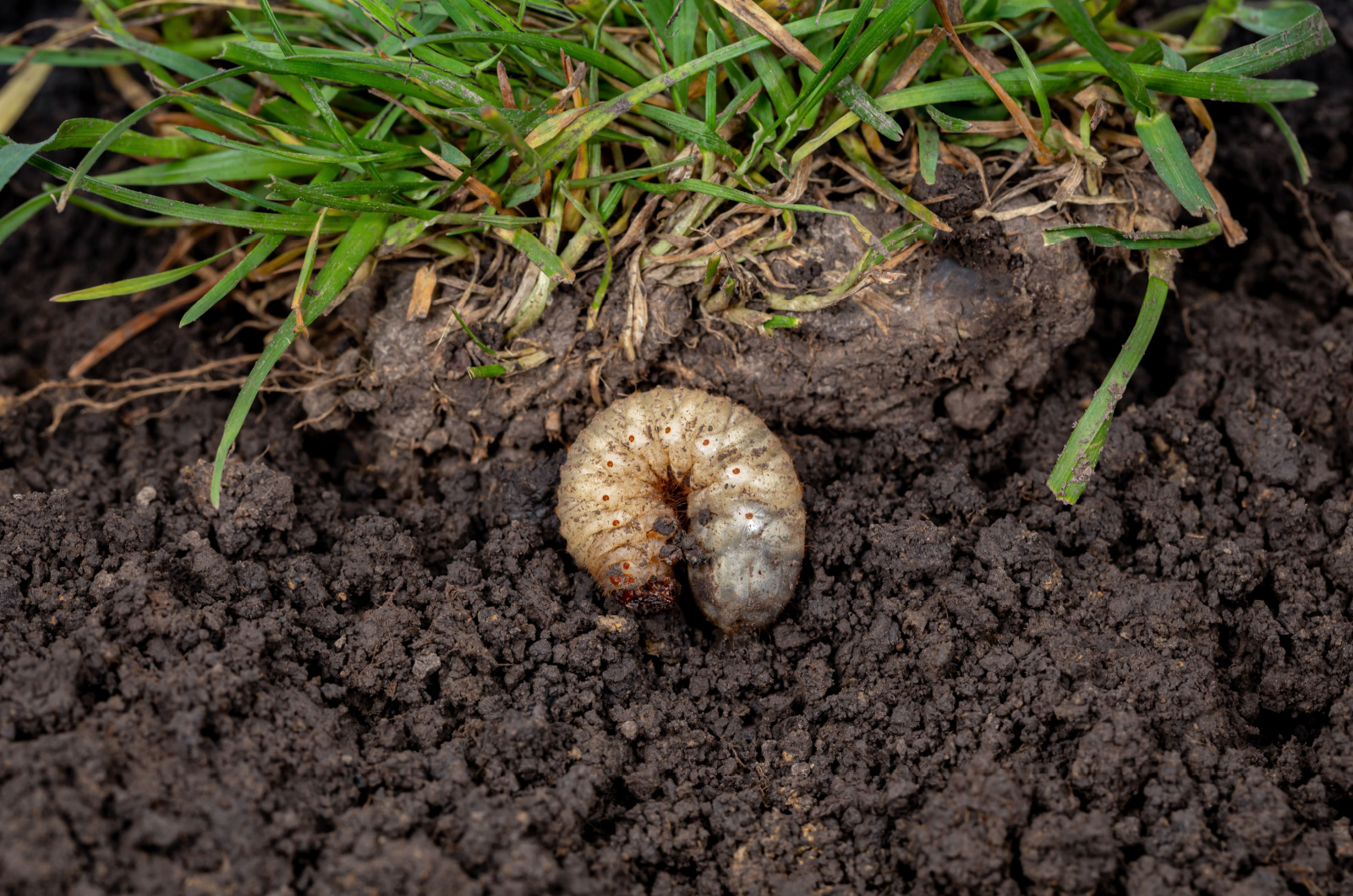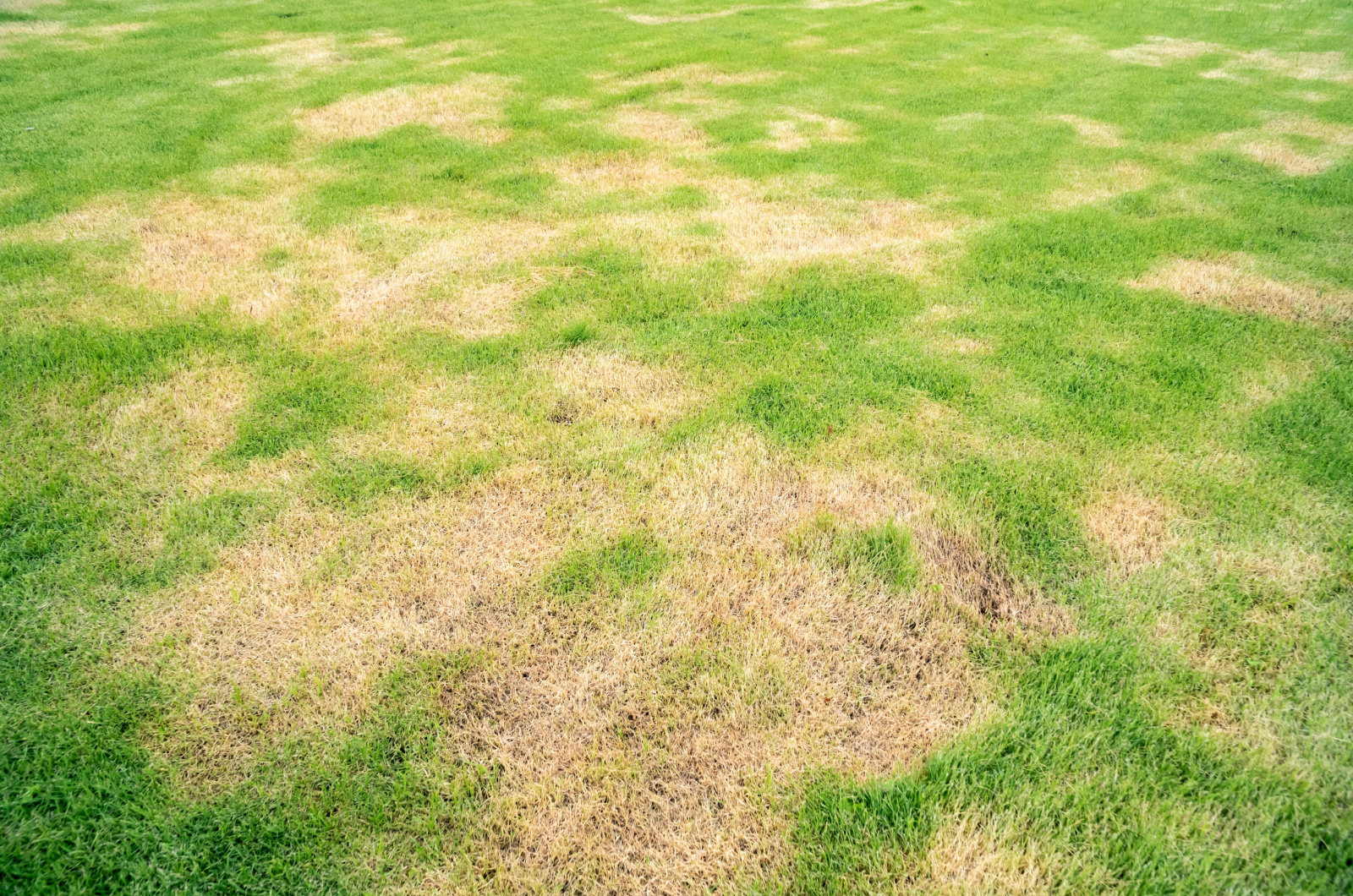A beautiful, thriving lawn is every homeowners’ dream; however, sometimes the grass just won’t cooperate!
The real reasons behind slow grass growth can be tricky to spot. You have to take good care of your lawn, just as you would with your indoor or outdoor plant collection. Watering, fertilizing, sunlight, and soil all influence grass growth.
So, let’s dive into the common issues that might be holding your lawn back and find the solutions to get it back on track!
1. Compact Soil
If your soil is dense as a brick, then grass roots find it difficult to spread and breathe. Compacted soil is a common issue that can hinder grass growth. Yellow and bare patches on the lawn are often caused by compact soil.
Other signs are excessive weed growth, soil feeling hard to the touch, and water forming puddles instead of soaking into the soil. Now, this is when soil aeration comes in handy!
This process helps to loosen up the soil and oxidize it, which makes it easier for grass roots to grow and absorb nutrients around them. This can be done by perforating the soil with metal tools or wooden stakes to create small holes that allow air and water to pass through.
If it is still too compact, then consider renting a mechanical lawn aerator or calling the professionals to help you. Here’s what to do after aerating your lawn.
2. Not Enough Sunlight
Grass needs its daily dose of sunshine just like the rest of your plants. It generally needs about four to six hours of sunlight during the day. If your lawn is in the shadow of tall trees, buildings, or structures, it may not be getting the sunlight it needs to thrive.
Pruning trees or trimming bushes to allow more light to reach your grass can work wonders. You might need to alter your watering and mowing procedures if the shade is caused by nearby structures.
Since shaded grass receives less sunlight for photosynthesis, it also loses less moisture during the day; therefore, you should water it less regularly.
In order to provide the grass in shaded parts greater surface area for light absorption, you should allow it to grow approximately 1 inch higher than grasses in sunlit areas.
3. Inadequate Watering Habits
Overwatering or underwatering can both be detrimental to your lawn’s health. Finding the sweet spot for watering is crucial if you want to have a thick and green lawn.
Now, you can either use a sprinkler or a hose to water your lawn. Most of them need 1 to 1.5 inches of water once or twice during the week (depending on the weather). Make sure to water your lawn early in the morning so that it doesn’t evaporate too quickly.
If you are using a sprinkler system, I would suggest you use a flow timer device to ensure that the right amount of water is applied to your lawn. This way, you will easily avoid over- or underwatering.
If you just finished mowing the lawn and now you are not sure whether you should water it, then see what happens if you water your lawn after mowing.
4. Pest Infestation
Your grass is susceptible to various pests just like your plants. Sneaky pests can wreak havoc on your lawn, munching away the grass roots and leaving you with yellow or thinning patches on the lawn.
Worms, grubs, chinch bugs, and many other pests can find their way into your lawn, lay eggs, and reproduce quite quickly.
Sprays, pellets, and concentrated liquid insecticides are required to combat most of these lawn pests. The good news is that pesticides continue to work for months after you apply them, so you won’t need to treat your grass as frequently.
To prevent pests from even entering your lawn, avoid overwatering and creating a damp environment, and also remove any type of debris they can seek shelter in.
Check out: 7 Signs Of Grubs In Lawn With Helpful Tips To Remove Them
5. Soil Is Too Acidic Or Alkaline
Soil pH plays a significant role in grass growth. If your soil is too acidic or alkaline, it can hinder nutrient absorption. A simple soil test can reveal your soil’s pH level, and you can adjust it with appropriate amendments to create the ideal environment for your grass.
By adding substances like sulfur, vinegar, and diluted lemon juice, you can acidify the soil easily – make sure not to overdo it, though!
To lower the acidity, you can add baking soda, compost, certain fertilizers, or powdered limestone. However, it can take up to a year for the pH levels to change, so be patient.
Most grass types grow best in pH levels between 5 and 7.5. Anything below 5 is considered acidic and usually caused by excess nitrogen that comes from water runoff, fertilizers, or debris.
Alkaline soils have pH levels of about 7.5 and are usually found in dry regions with little rain.
6. Type Of Grass Seed Is Wrong
All grass is not the same, remember that. There are over 12,000 different grass species, and around 10 of these are commonly grown for lawns.
So, different types of grass thrive in different climates and environments. This is why they are divided into warm-season and cool-season grasses.
The type of grass seed you have sown might not be well-suited to your climate or soil conditions. Research the best grass species for your region and match it to your soil type for optimal growth.
If the previous owner sowed the seeds, you can try and identify it by looking at its texture, shape, and color.
Kentucky bluegrass, Perennial ryegrass, and Fescue are suitable for colder climates, while Bahia, St.Augustine, and Bermuda grass are suitable for warmer regions.
If you live in Florida, then check out: Grass Types In Florida: 7 Top Picks For Your Florida Lawn
7. Not Mowing Properly
As we already know, lawn maintenance includes mowing, but if you are not doing it right, then you might be hindering the growth of your grass and making it more susceptible to pests and fungi.
Find the sweet spot for your grass type, keeping it at the right height and sticking to a regular mowing schedule. Make sure that your mower blades are sharp and clean otherwise you’ll end up with unclean cuts which expose the grass to various infections.
Avoid mowing during a drought or after a heavy rainstorm. Mow your grass when the timing is right, and even then make sure you don’t cut more than one-third of the height. Most grass types should be kept between 0.5 to 4.5 inches tall.
In case you don’t want to spend every Sunday mowing your lawn, please check out some of these 11 no-mow lawn alternatives that are perfect for gardens!
8. Nutrient Imbalance
Three key minerals are required for proper growth and development of your lawn: phosphorus which helps with transporting energy, nitrogen which helps with creating chlorophyll, and potassium which supports essential processes such as photosynthesis and respiration.
An imbalance in these essential nutrients can lead to stunted growth, but can also make the grass more vulnerable to lawn diseases.
A soil test can pinpoint nutrient deficiencies, and you can adjust your fertilization accordingly to ensure your grass gets what it needs. I would suggest you use a slow-release fertilizer so that a single application will disperse nutrients over a period of six to eight weeks.
Only two to three applications per year are needed for the slow but consistent release of minerals, and there is minimal risk of mineral overloading the root systems.
This is important because using too much fertilizer can have a negative impact and leave you with a damaged, dry lawn. You can also use liquid fertilizers for quick-release of nutrients.
Also read: The Key Ingredient For Turning Your Lawn A Dark Green Quickly
9. Lawn Diseases
Lawn diseases are every homeowner’s nightmare. These fungal diseases weaken the root systems, cause discoloration of the grass, and eventually lead to wilting and dying. So it’s better to act quickly if you want to save your lawn!
Powdery mildew, Fairy ring, Pythium blight, and other fungi cause damage that can hardly go unnoticed. Identifying the specific disease and applying the correct treatment can save your lawn from further harm.
For instance, powdery mildew creates white marks, fairy rings cause darkening circles, and pythium blight results in yellow patches. Affected areas should be removed or treated with fungicides.
Keep in mind that during colder or drier seasons, grass does really go dormant. When there is nothing to worry about, you might be assuming that dormant grass is dead.
Give your grass a gentle tug to help you identify the difference. It’s probably dead if it can be easily removed from the ground. If it is a bit harder to pull, then you are dealing with dormant grass.
Here’s a video that might be helpful:

